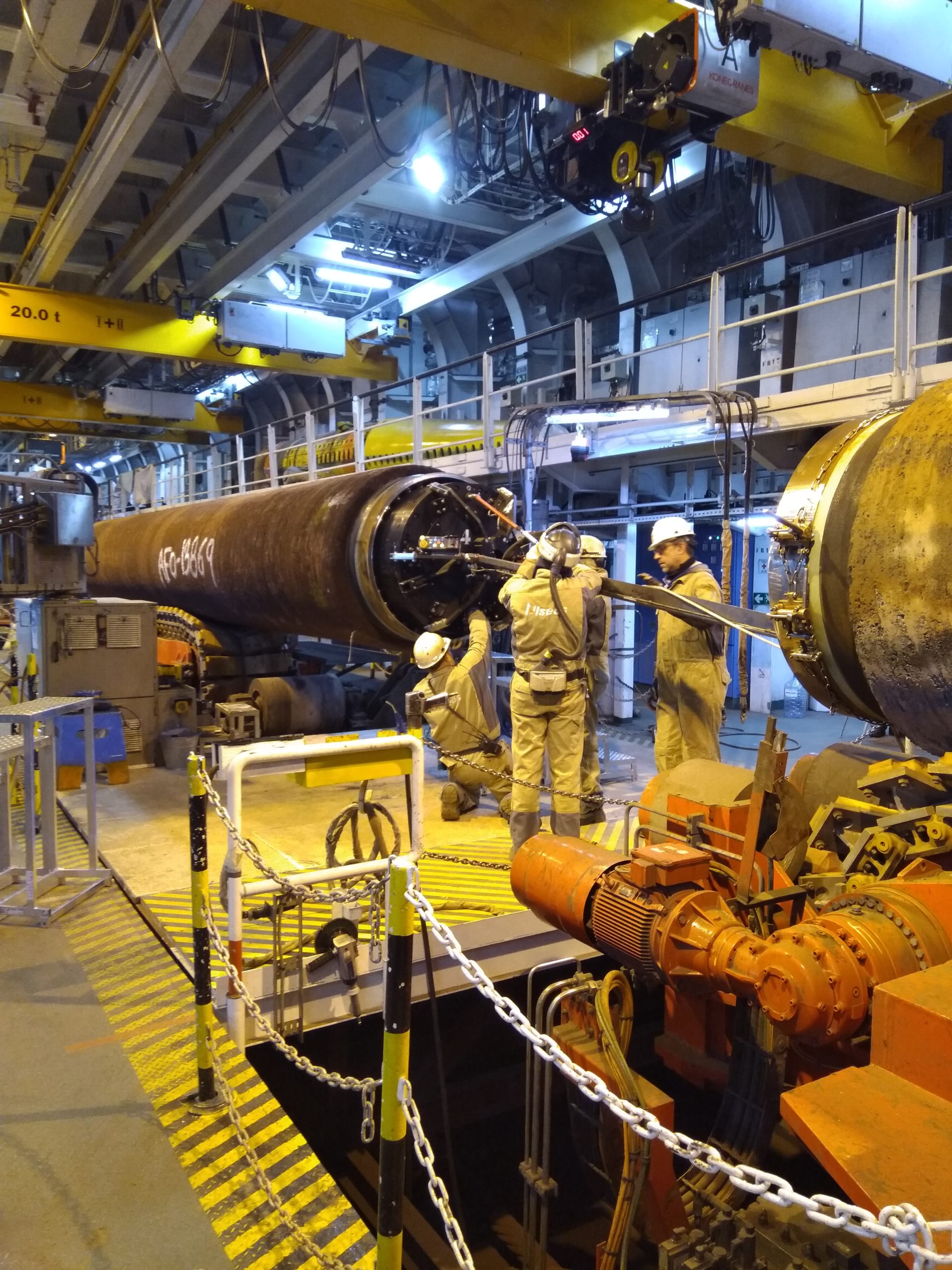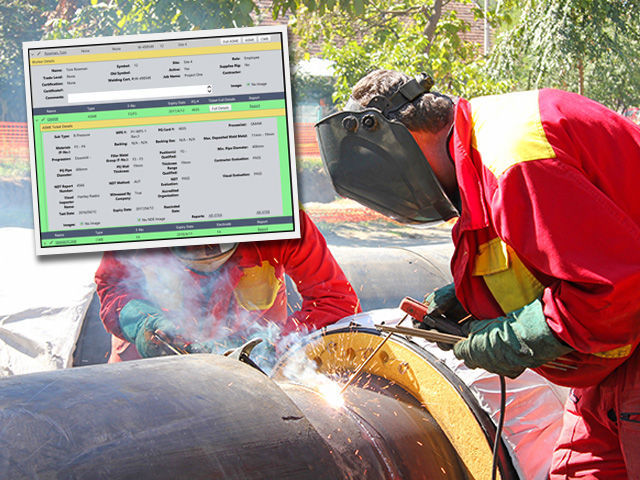
Ideal Practices for Pipeline Welding Examination: Strategies, Specifications, and Treatments to Accomplish High Quality Assurance and Conformity
Effective pipeline welding examination is crucial for guaranteeing the honesty and safety and security of crucial framework. By utilizing a mix of methods such as aesthetic inspection and progressed non-destructive screening approaches, along with adherence to developed industry standards like those from ASME and AWS, organizations can substantially enhance their quality control procedures. However, the execution of these best techniques presents different obstacles that warrant cautious factor to consider. Understanding the intricacies entailed in each phase of inspection is critical to achieving conformity and reliability in pipe systems. What specific approaches can be utilized to navigate these challenges successfully?
Relevance of Welding Inspection
The honesty of bonded joints is critical in making sure the safety and security and reliability of pipeline systems. Proper welding methods and detailed assessment processes are vital to avoid failings that can result in catastrophic incidents, ecological damage, and death. Pipeline Welding Inspection. Welding assessment works as a precautionary step, recognizing problems such as splits, porosity, and insufficient combination prior to they intensify into severe problems
Furthermore, pipeline systems commonly operate under high pressure and extreme problems, making the high quality of welds much more critical. Regulative conformity is an additional substantial aspect, as various criteria dictate the quality control procedures that need to be stuck to in pipe building and construction and upkeep. Failure to comply can result in economic losses and legal ramifications.

The duty of welding examination expands beyond plain confirmation of craftsmanship; it includes the guarantee of long-term operational integrity. This involves a methodical approach that consists of not only aesthetic evaluations yet also progressed non-destructive screening techniques. Inevitably, effective welding inspection is an investment in the long life and safety and security of pipeline systems, guaranteeing they function as planned while minimizing threats related to material shortages.
Trick Assessment Techniques

Visual evaluation, commonly the first line of defense, enables the recognition of surface area defects such as fractures, damages, and porosity. Ultrasonic screening employs high-frequency acoustic waves to detect interior problems, using a thorough analysis of weld honesty. This non-destructive approach is especially effective for determining gaps that might not be visible externally.
Radiographic screening includes making use of X-rays or gamma rays to create photos of the bonded joint, disclosing internal defects. This technique provides comprehensive insights however may call for specific tools and safety and security factors to consider. Last but not least, magnetic particle testing is effective for identifying surface area and near-surface interruptions in ferromagnetic materials, utilizing magnetic areas and fine iron fragments.
Industry Specifications and Regulations
Conformity with market criteria and regulations is important for making certain the quality and safety and security of pipe welding assessments. These criteria offer a framework for best techniques in welding procedures, materials, and examination techniques, permitting organizations to decrease problems and enhance the honesty of pipeline systems. Key bodies such as the American Society of Mechanical Designers (ASME), the important link American Welding Society (AWS), and the International Organization for Standardization (ISO) state guidelines that are commonly identified and taken on within the sector.
In the USA, guidelines from the Pipeline and Hazardous Products Safety Administration (PHMSA) govern the security of pipe procedures, mandating rigorous examination methods. These criteria not just serve Discover More Here to shield public safety and security and the environment however likewise make sure conformity with legal and lawful responsibilities. Adherence to the appropriate codes, such as ASME B31.3 for process piping, is vital for maintaining functional performance and regulatory conformity.
Moreover, constant updates and modifications to these requirements mirror technical developments and developing market methods, stressing the need for organizations to remain enlightened and train employees accordingly. Ultimately, durable compliance with well-known requirements cultivates count on and dependability in pipe infrastructure, protecting both assets and stakeholders.
Effective Evaluation Treatments
Reliable inspection treatments are crucial for determining prospective issues in pipe welds and ensuring the general stability of the system. A methodical approach to assessment includes several key stages, including pre-weld, in-process, and post-weld assessments. Each phase plays a crucial role in maintaining top quality guarantee.
During pre-weld evaluation, it is vital to assess the materials and joint arrangements, making certain conformity with job requirements. In-process inspections involve keeping an eye on welding methods and specifications, such as heat input and take a trip speed, to stop problems from happening. This stage allows for real-time modifications to welding practices.
Post-weld inspections consist of non-destructive screening (NDT) strategies like radiography, ultrasonic testing, and magnetic bit screening. These approaches assist discover interior and surface imperfections that can compromise the pipeline's performance. Documents of all evaluation tasks is extremely important, providing a traceable document that supports conformity with sector standards.
Training and accreditation of inspection workers even more boost the effectiveness of these procedures. By adhering to a structured inspection protocol, organizations can minimize threats, make sure compliance, and ultimately deliver pipes that fulfill rigid safety and security and efficiency demands.
Common Obstacles and Solutions
Pipeline welding assessment presents a number of common challenges that can impact the top quality and safety of the final product. One substantial challenge is the variability in welding strategies and materials, which can result in irregular weld quality. To address this, it is critical to establish standard procedures and training for welders, making sure an uniform approach across jobs.

Environmental elements, consisting of temperature and moisture, can also influence the welding procedure, potentially causing splits or incomplete combination. Carrying out regulated atmospheres and adhering to pre-weld treatments can mitigate these dangers.
Verdict
To conclude, the execution of ideal practices for pipeline welding evaluation is essential for ensuring quality control and compliance with sector criteria. An extensive strategy, including different techniques such as visual, ultrasonic, and radiographic screening, assists in the identification of issues throughout all phases of the welding procedure. Pipeline Welding Inspection. Adherence to developed regulations and effective inspection procedures not only boosts the integrity and security of pipeline systems yet additionally alleviates threats associated with welding flaws, thus advertising general functional stability
Conformity with industry criteria and laws is important for making sure the quality and safety and security of pipe welding assessments. These standards give a structure for finest practices in welding procedures, materials, and inspection methods, allowing organizations to lessen problems and boost the honesty of pipeline systems.In the United States, regulations from the Pipeline and Hazardous Materials Safety And Security Administration (PHMSA) govern the security of pipeline operations, mandating rigorous assessment methods. A systematic strategy to inspection incorporates numerous vital phases, including pre-weld, in-process, and post-weld examinations.In conclusion, the application of best techniques for pipeline welding evaluation is necessary for ensuring quality guarantee and conformity with sector requirements.